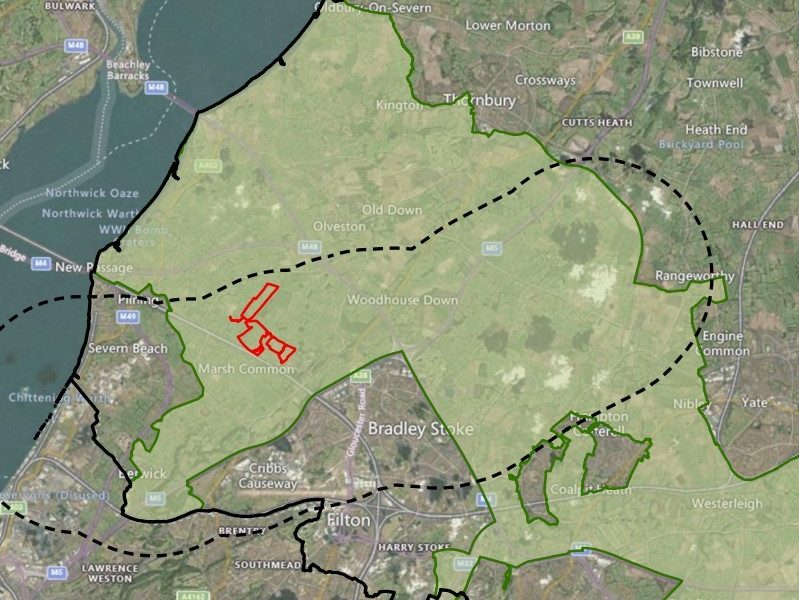Plans have been narrowly approved for a giant solar farm in the countryside north of Bristol which will power around 18,000 homes a year. But the developers faced opposition from local residents and parish councils, with a range of concerns including the impact on house prices.
The Cattybrook Solar Farm will be built west of Almondsbury, covering 83 hectares across 23 agricultural fields. Solar panels will generate 49.9 megawatts of energy, and the plans also include access roads, cabling, a control room, a substation, storage containers, a battery compound, two-metre high security fencing and CCTV.
Councillors on the development management committee voted five to four to approve planning permission. However, local residents said their rural homes were being affected by urban sprawl, and the countryside should be protected from development. They also feared the solar farm would harm natural habitats, blight views and could be at risk of flooding.
Alderman Peter Tyzack, chair of the Pilning and Severn Beach Parish Council, said: “I’m here today to speak for the residents, those who feel they have no voice against the might of big business. I drove through the lanes again today, just to enjoy them once more, before this development destroys it all forever.”
The plans are limited for 40 years, after which Luminous Energy says the land could be farmed again. But Mr Tyzack said this was unlikely, and new housing would be more realistic. He added that tidal power would be a better option to generate renewable energy, with the Severn nearby.
There were also differing views on whether the site counted as “Grey Belt” land, a new category of land created by the new Labour government. This refers to countryside that does not strongly contribute to the purpose of Green Belt protections in stopping urban sprawl.
The location was chosen due to the grid having spare capacity for new energy generation, which can be hard to find. The plans were also changed from their initial layout, after the energy company met with local residents who were worried about being able to see solar panels from their homes. Wildflower meadows and new hedgerows will be planted, helping the environment.
Jolyon Orchard, chief executive of Luminous Energy, said: “The amount of solar currently connected to the region’s electricity distribution network needs to increase sevenfold in the next four years to meet government targets. There will be an ongoing agricultural use, with sheep grazing. From my experience on other projects, sheep happily coexist with solar panels.”
Luminous will also provide a community fund worth £20,000 each year, which will pay for initiatives helping local people in the area. Access to the site will be via Woodbury Lane. Large batteries will store some of the power generated by the solar farm on site.
Councillors on the committee asked why more renewable energy was needed, and suggested the solar farm was too large. However, government policy and council policy both encourage more renewable energy generation as part of the switch away from fossil fuels, which emit greenhouse gases and are causing the climate crisis.
By Alex Seabrook, Local Democracy Reporter


